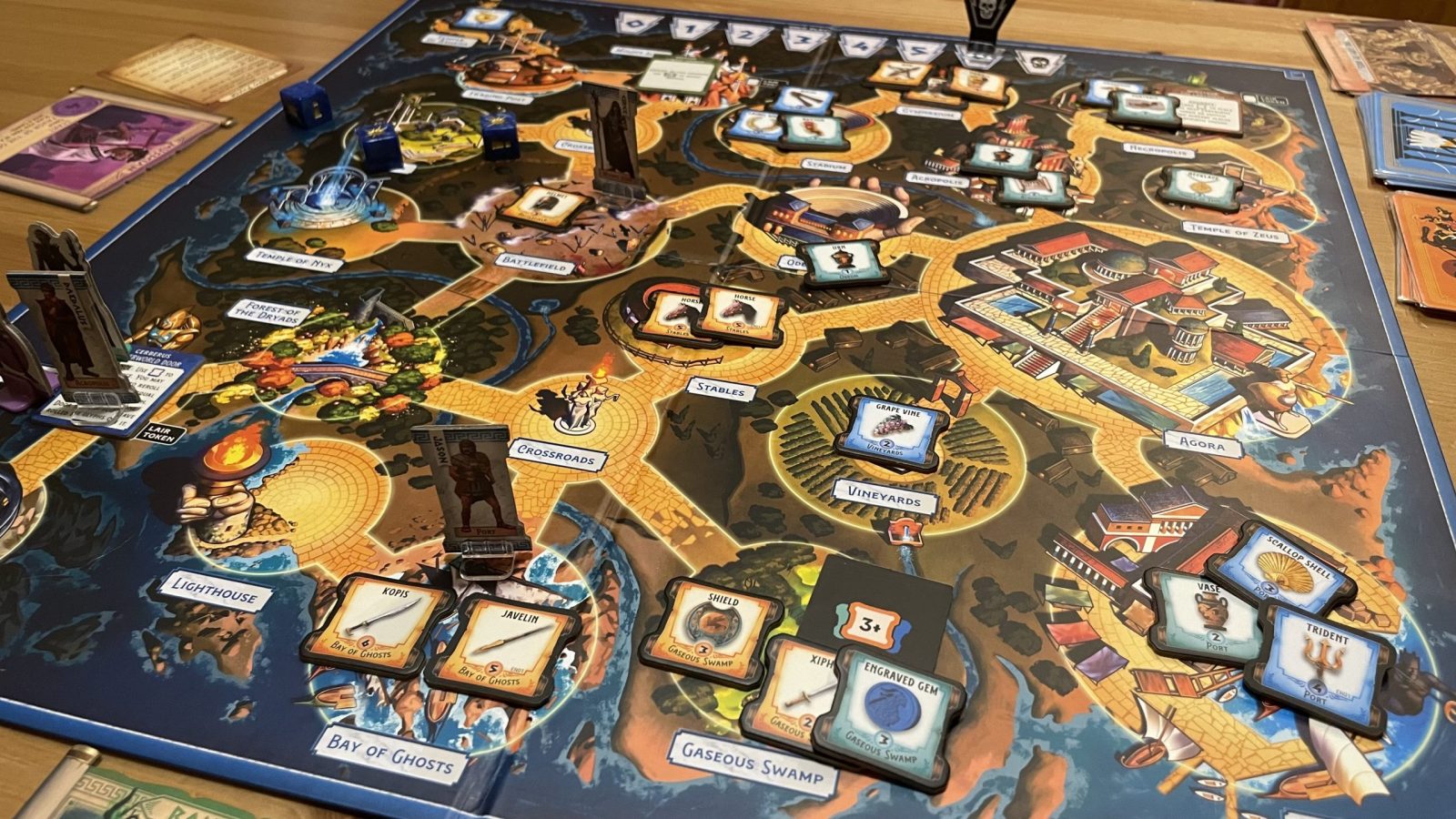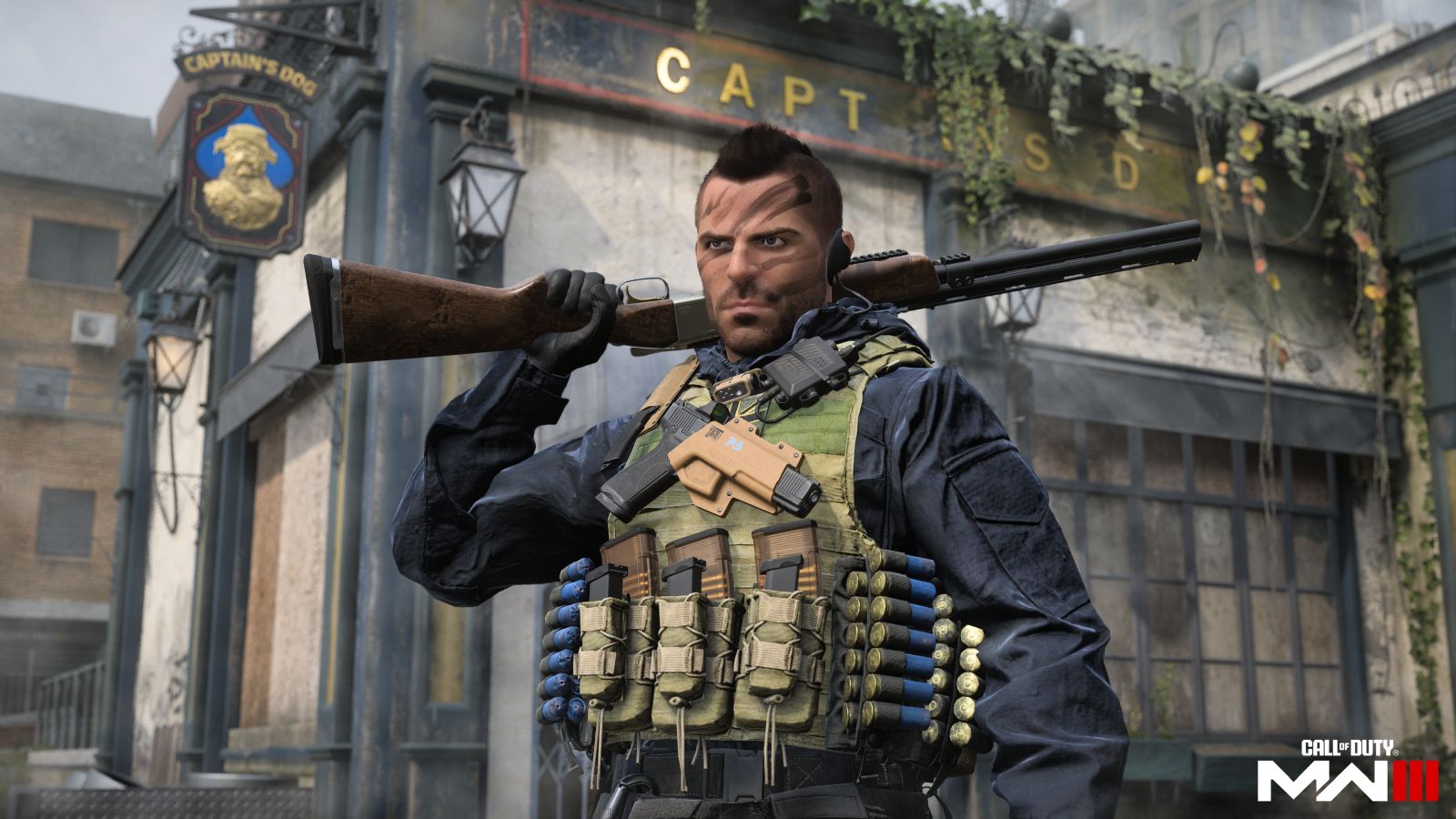Team Ninja is synonymous with fast-paced and intricate fighting mechanics in gaming, with both the Nioh and Ninja Gaiden series under their belt, so it comes as no surprise that their latest release – an open world take on the anti-shogunate movement during Japan’s Bakumatsu Period with a focus on innovative and in-depth combat mechanics – has been met with much anticipation from die-hard Team Ninja and soulslike fans alike. I’m happy to report that, while the game doesn’t exactly rise up to the lofty heights it may have aspired to, it is still a fun, difficult, and lengthy experience which becomes better as it progresses, despite being held back at times by repetitive design and a surprising lack of polish.
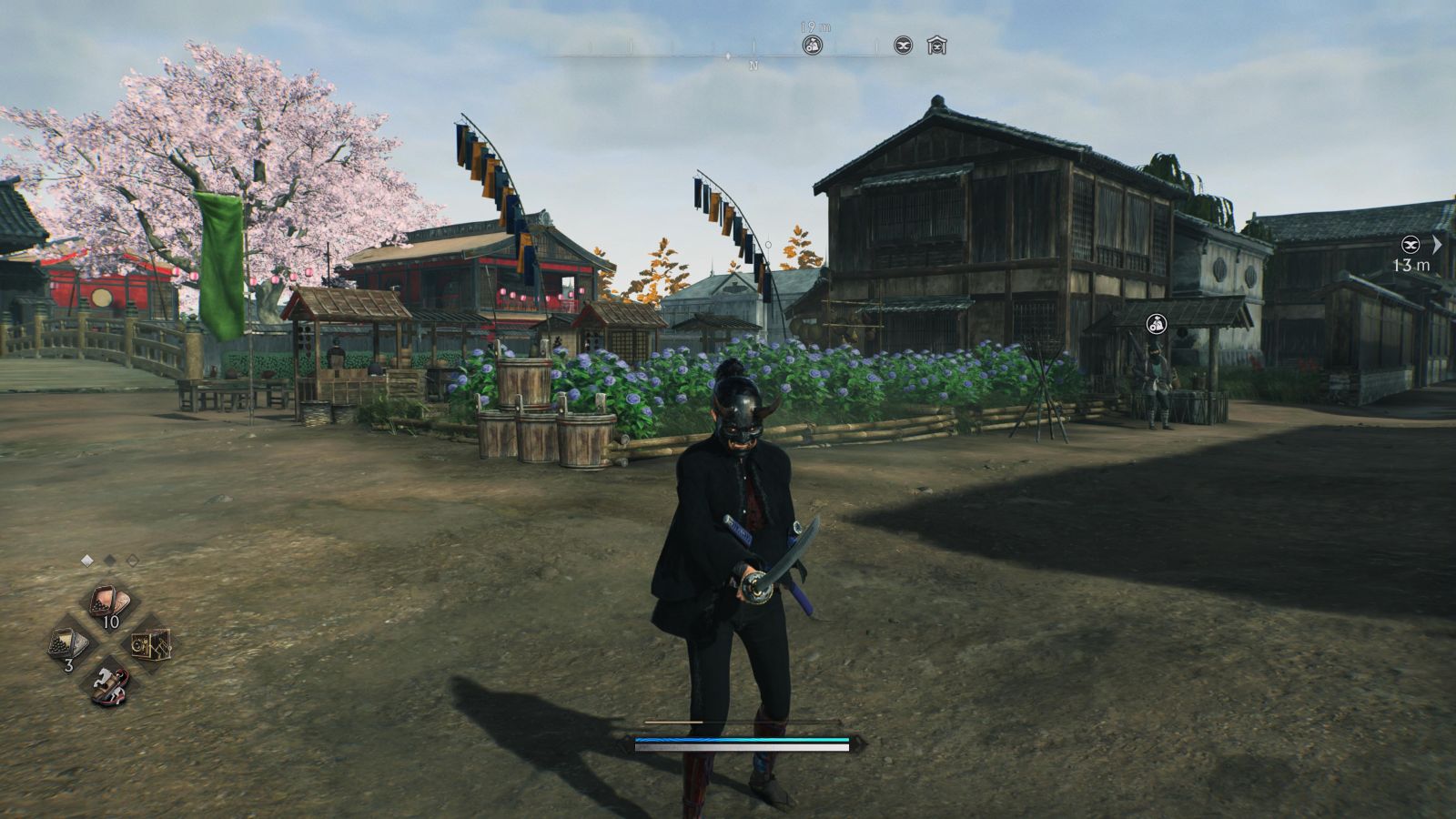
Story
The story begins at a time of political upheaval, with Japan unified and closed off to influence from the outside world. Despite this time of relative peace, the Daimyo are secretly plotting to overthrow the Shogun. Catching wind of their treason, the Shogun begins the extermination of all who oppose him, leading to the creation of a skilled set of warriors known as the Veiled Edge. The Veiled Edge are knowledgeable in both the way of the sword and subterfuge, in hopes of being able to stand against the Shogun. Members of the Veiled Edge are trained by the Kuroso clan and travel in pairs, known as blade twins, who are nigh unstoppable when together. As our story begins, our protagonists watch helplessly as their town is destroyed and its population is mercilessly murdered. With nowhere to go, the two run off, eventually ending up under the care of the Kuroso clan who trains them in the way of the blade. Once prepared, the two, now officially blade twins of the Veiled Edge, set off to assassinate Commodore Matthew Perry as he makes his way to Japan.
To explain the story in more detail would ruin the adventure, but players will become active participants in real events and form bonds with many of the real individuals who made important contributions to these conflicts. Rarely has a game allowed me to feel like my choices matter like Rise of the Ronin did. There were multiple instances where I was forced to make a drastic choice – often determining if someone lives or dies – and found myself hesitant to do so despite my feelings towards that character’s previous actions. One of Rise of the Ronin’s strengths is that it treats all characters as real people with ambition and vision. Sure, they may sometimes overstep or act blatantly aggressive, but often feel as if what they are doing is for the good of the people they represent.
The fact that your choices resonate throughout the world for the rest of the campaign, often affecting how storylines play out and your bond with others, drives home the point that choices matter. Despite my best efforts to toe the line and please all sides of the conflict, I found that a few moments forced me to go with my gut instinct, despite knowing that it would actively hurt my bond with a few allies. I appreciate Rise of the Ronin for not telling a straight black and white story, but for attempting to show that all sides believe that what they are doing is correct, and the difficulties of navigating a world on the brink of change.
Since Rise of the Ronin can be exposition heavy at times it is important to note an incredible feature which Team Ninja has implemented which allows the player to pause during most conversations or cutscenes to review documents relating to the individuals, events, and locations being discussed. This not only helps those not familiar with the timeline to better keep track of what is occurring, but also provides a brief history lesson for those who are simply curious for more information. I hope this is a feature used more often in gaming moving forward.
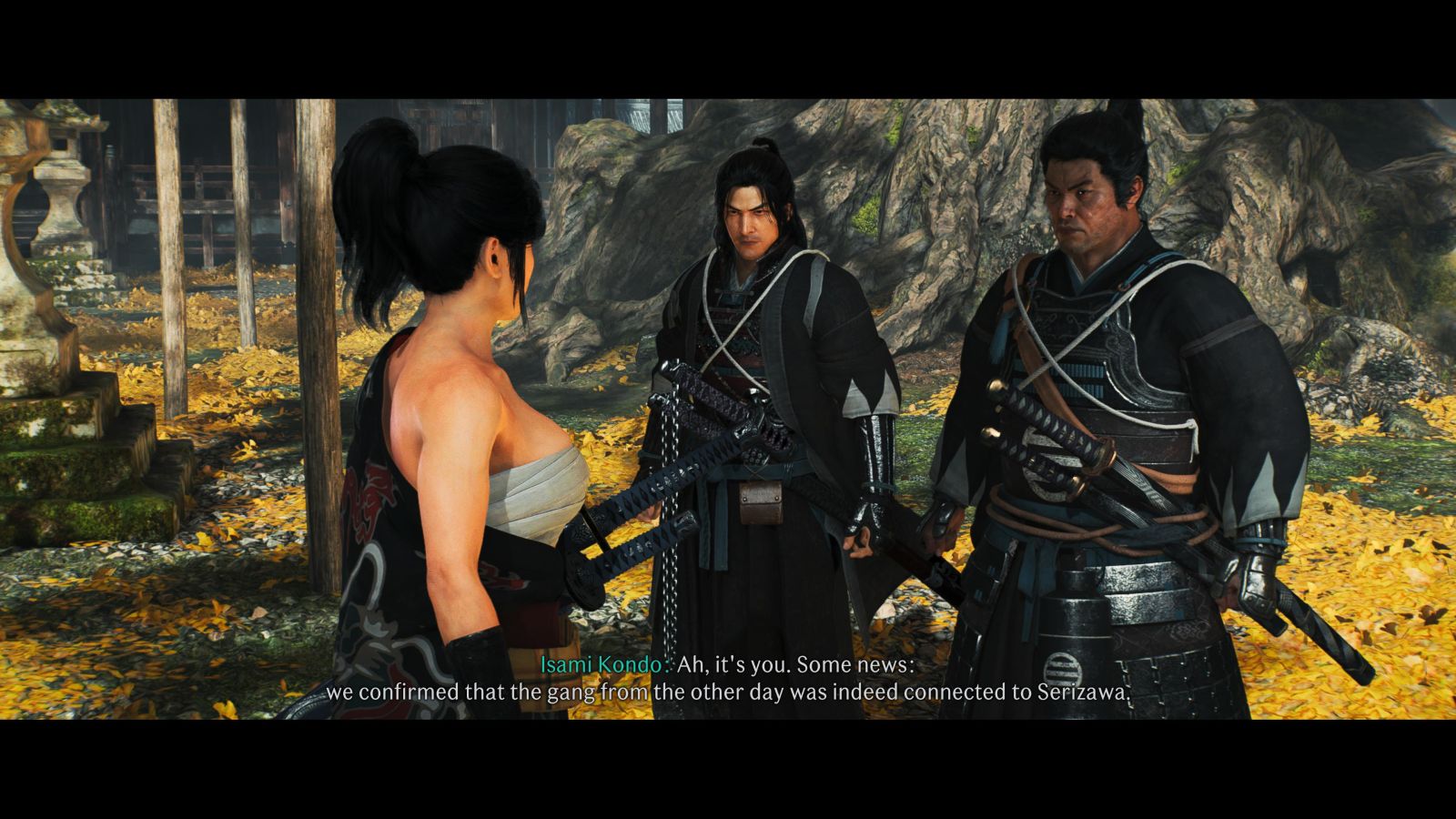
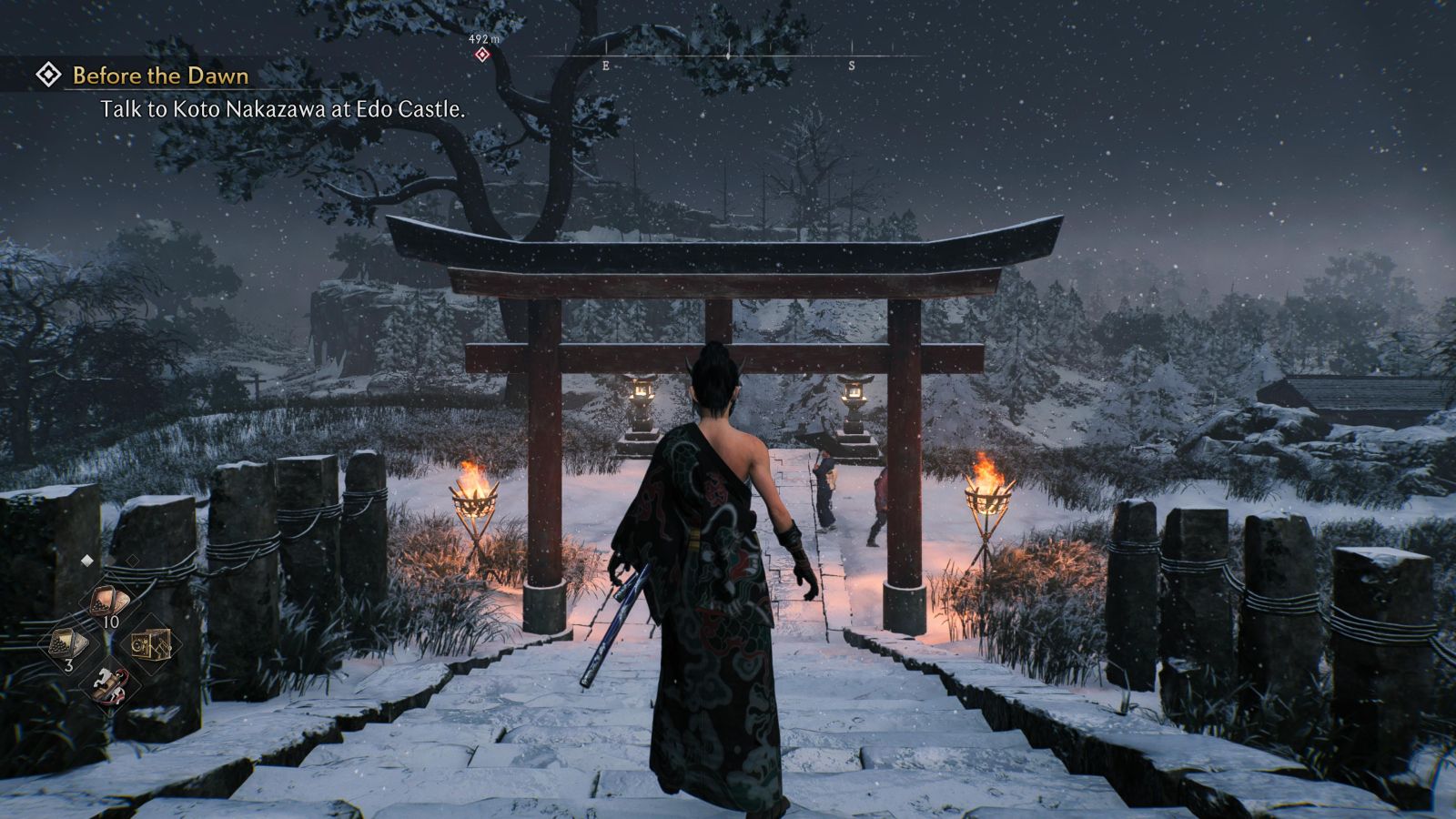
Starting Your Journey
When you begin the game proper, you are given the chance to choose the difficulty level. This is new for a Team Ninja game, or at least a game in the Soulslike genre, but is sure to be both a welcomed and loathed addition depending on who you speak with. Your difficulty choices are Dawn, Dusk, and Twilight. Dawn focuses more on the story aspects and features less intense combat, though it may still prove a challenge to those not accustomed to the genre. Dusk is balanced for both story and fighting mechanics and is the default setting and close to, but not quite as hard, as players have come to expect from Team Ninja. While Twilight provides the true Team Ninja experience and is only for those confident in their skills.
After choosing your difficulty, you’ll jump into the relatively robust character creator. If you’re someone who enjoys the character creation process, then you’re in luck as Rise of the Ronin has you create not just one of the blade twins, but both of them. If you don’t enjoy the process well – sorry, hit randomize and move on. For those who do take pride in their characters, you’ll find that this system allows you to tweak nearly everything about your character looks and even adjust their vocal pitch and voice type. While there are more advanced character creators out there, Rise of the Ronin’s is sufficient enough to dream up a couple of satisfying protagonists. Thankfully, the characters you create are playable and will often be featured in cutscenes, so your hard work continuously pays off throughout the campaign.
After you’re satisfied with your design, it’s time to set up your character’s initial abilities and skill set. You have six unique defining traits to choose from, though ultimately you can shape your character as you see fit throughout the campaign so I wouldn’t waste too much time worrying about what path to choose. The character classes available are Killer, Breaker, Seducer, Sapper, Beginner, and Unsharpened. The Killer class focuses on cutting down enemies quickly and striking fear in them while doing so; the Breaker class focuses on the art of Ninjutsu, with training in various equipment types and the ability to assassinate easily; the Seducer class is charismatic and charming and often uses these traits to deceive people, while also being quite adept at managing their Ki; the Sapper class functions best as a spy, boasting a wide range of knowledge, while also being adept in firearms and medical practices and capable of excelling in negotiations; the Beginner class is a novice with a wide range of skills and capable of learning quickly, but lacking any specialization; and finally, the Unsharpened class is inept, with poor attributes, and survives merely on luck.
Lastly, you will be given the option to choose two weapons between the Polearm, Katana, Spear, Paired Swords, or Odachi, to begin play with. Again, the choice you make here can be changed at any time during play, so you’re not locked into anything beyond the first few steps into the game before you begin receiving your first weapon drops from enemies. You can have two weapons equipped at any time, and you can easily swap between weapons during play by holding R1 and pressing Up.

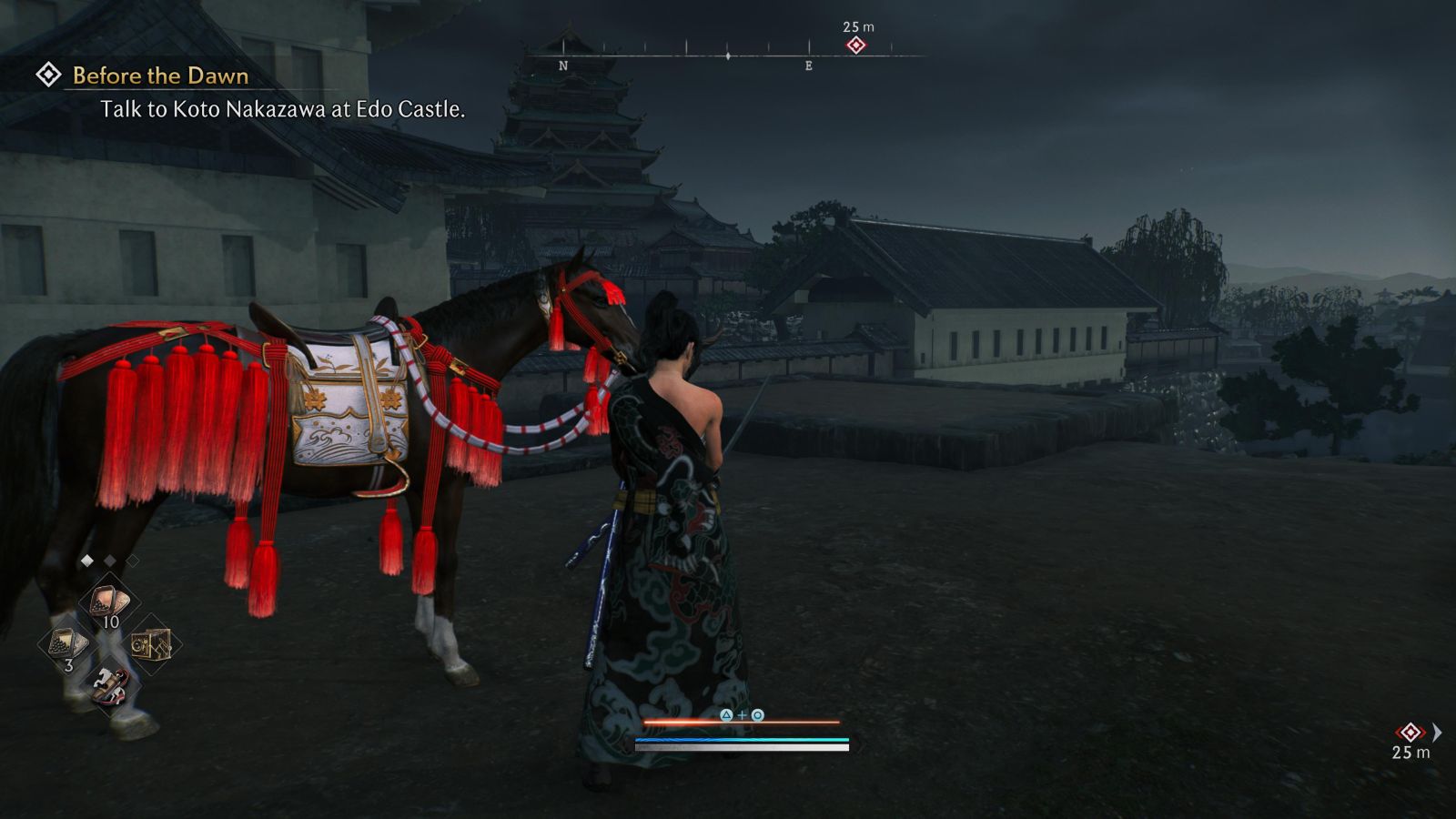
Combat
Combat is somehow both in-depth and surprisingly basic. Your chosen difficulty level will ultimately determine how dedicated to mastering all the combat options available you’ll need to be, but for the sake of this review, I’m going to assume most players will play on Dusk difficulty, if not Twilight.
Your basic attack is accomplished by simply hitting the Square button, which will swing your weapon and lead to some flashy combos, while holding in Square will lead to a charged attack. Despite being basic, simply mashing the Square button can often lead to victory, especially once you have invested a few skill points into your strength and have the right weapons equipped. Of course, there are difficult enemies and bosses who tend to crop up everywhere you go, and for those you will need to begin diving into the more complicated combat features to prevail.
Like Nioh before it, all actions performed during a fight require Ki, which is indicated as a blue gauge on the screen. This includes attacking, blocking, dodging, and getting hit. Allowing your Ki to fully deplete will make your character vulnerable for a moment as you catch your breath, leaving you open for a barrage of often devastating attacks from your enemy. To avoid this, it is essential to learn how to manage your Ki as you fight by knowing when to attack, deflect, or back off for a brief respite. To help regain Ki quickly you can perform a blade flash, which is done by simply pressing R1 directly after an attack, with the amount of Ki replenished by the blade flash being determined by the amount of blood on your blade. Essentially, the longer you hold off performing a blade flash during a fight, the more reward you will receive.
To survive, you’ll need to master a few advanced combat techniques. The easiest forms of defense are blocking and dodging, with blocking accomplished by pressing L1 and dodging accomplished by pressing O. Likewise, if you hold in O you can run, and whether you like to admit it or not, there are more than likely a few times where you’ll step into an encounter you are not ready for and need to run away to regroup. Keep in mind that during a fight running will consume Ki, but while exploring your Ki will not drain, which is a welcome design choice.
While blocking and dodging will suffice for a while, Countersparks and Martial Skills are the bread and butter of the combat system. Parrying, known as Countersparks in Rise of the Ronin, is accomplished by pressing Triangle immediately before a hit. While it may take a while to get the Counterspark timing down, it can be a lifesaver during more difficult duels as Countersparks are used to deflect enemy attacks and prevent you from being injured. If you are able to deflect enough attacks in a row, then you’ll eventually deplete your opponent’s Ki and cause them to panic, which will be indicated by the lock on reticule turning red and how the enemy will begin to pant or back away from you in fear. During this short period the enemy is open for a critical attack, which can be done by simply pressing Triangle. Critical attacks are satisfyingly gory affairs, often ending with a multitude of chopped off limbs and over the top blood splatters. After a particularly tough fight, finally pulling off that last critical attack and watching your enemy fall to the ground – often literally in pieces – never ceases to be rewarding.
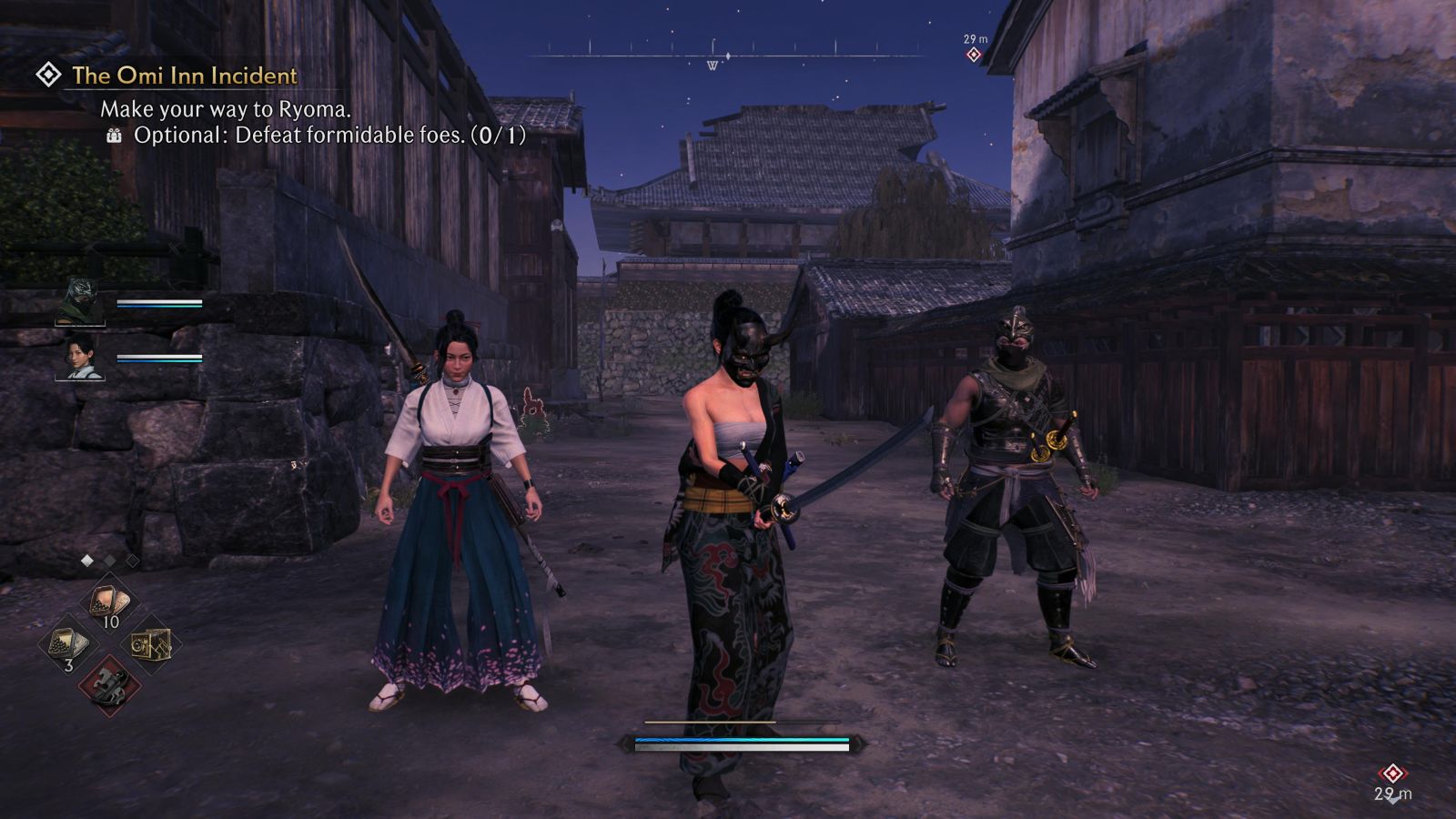
Countersparks can also be used to reflect projectiles in true ninja fashion and doing so will momentarily set your weapon ablaze and strike fear into the enemy shooting at you. It’s all very cinematic and fulfilling to pull off, though I found that after the first few times I began just charging at enemies and facing them head-on instead of attempting to properly time bullet and arrow deflections.
While Countersparks are essential, so Is mastering Martial Skills, powerful Ki draining attacks which vary based on the weapon and stance you are using and may be anything from a simple, but strong, forward thrust or a multi-hit spinning attack, to a front flip which ends with a sword slice directly onto an enemy’s head. Martial Skills are utilized by holding in R1 and pressing either Square, Triangle, O, or X, depending on how you decide to map them. Martial Skills are great at quickly depleting an enemy’s Ki but do often leave you open to attack. Figuring out how to mix basic swings, Countersparks, and Martial Skills during each fight is essential to gaining the upper hand, especially during the more intense enemy and boss fights.
Just when you feel you’ve mastered basic fighting techniques, Countersparks, and Martial Skills you’ll be thrown a new challenge: fighting stances. You see, each enemy has a particular way of fighting and while you are welcome to fight back however you please, using the fighting stance which best counters that enemy’s style and weapon choice will help speed up the process. Stances are learned naturally, meaning to learn a new stance you must win a fight against someone adept in that stance. You’ll learn many stances just via regular progression of the campaign, but as you progress, you’ll also be given the opportunity to train in dojos against people you’ve encountered, the opportunity to tackle side quests which may lead to an encounter with a new character or enemy, and fugitives who serve as mini-bosses and are often skilled in a particular stance. The more you use a stance or train against those who are adept in that stance, the more efficient your skills become. You can toggle which stances are actively mapped to your controller at any time from the main menu but can only have three set to your controller at a given time. During combat you can easily swap between stances by holding in R1 and flicking the right thumbstick left, down, or right.
To better help the player identify how their current stance stacks up against an enemy’s stance, there are small up and down arrows on the right side of an enemy’s health bar which provide the player with helpful information at a glance. If the arrows are pointing down and red, then your current stance is the least effective stance against that enemy, if it is white, then your current stance matches the enemy, and if it is pointing up and blue, then your current stance is the most effective choice for that battle. While all of this sounds complicated, it becomes second nature quickly, and can be largely overlooked on the Dusk and Dawn difficulty levels, but on the Twilight difficulty settings these stances become much more important to pay attention to. Personally, I found I did better by sticking with the fighting stances I was most comfortable with, rather than attempting to swap stances on the fly in hopes of securing an advantage, though a few fights did force me to alter my playstyle.

Throughout the campaign you’ll encounter many basic enemies, but you’ll also stumble across formidable foes who serve as leaders and provide much more of a challenge to take down. All enemies are identified via symbols over their health bar and singling out the formidable foes and tackling them before the rest of an enemy group will lower enemy morale and will make the remaining enemies easier to defeat. Since your character is well adept in the ways of the Ronin, you have multiple options to take down these formidable foes before alerting the other enemies, including using your grappling hook to sneak across building tops for aerial assassinations, or sneaking up behind enemies for quick takedowns or critical hits. If all else fails, you can just run in and confront these enemies first, hoping that not too many other enemies notice your actions.
I briefly mentioned the grappling hook before without providing an explanation of what it is, so let me return to that topic. The grappling hook is one of the many essential items in your arsenal, and can be used to traverse high areas as well as upgraded to serve as a pretty deadly weapon in its own right. With it you can pull enemies off roofs, throw enemies at other enemies, or throw objects at enemies. When used effectively, the grappling hook becomes one of your most important tools. Guns, bows, bombs, shuriken, and even a flamethrower are also available, allowing you to tackle areas however you deem fit. Each item has its pros and cons, with guns being powerful with a long range but loud, which will alert nearby enemies, and bows being silent and great for discreetly clearing out enemies perched atop buildings, but only effective at a short range.
Despite all the combat techniques available and skills to learn, I often found myself growing tired of the repetitiveness of the combat, though I highly suspect that this may stem from lack of enemy variety. In Nioh and even the Ninja Gaiden series you had a large roster of enemies ranging from humans to monsters to battle, but in Rise of the Ronin you are largely stuck with basic humans and a few wild animals, or the occasional formidable foe that happens to have claws stuck to their hands or be twice the size of a regular enemy. Don’t get me wrong, the combat is mostly great and I had fun learning how to master fighting against the various styles I encountered, but for a game this long it seems almost unavoidable that the combat will grow dull eventually.
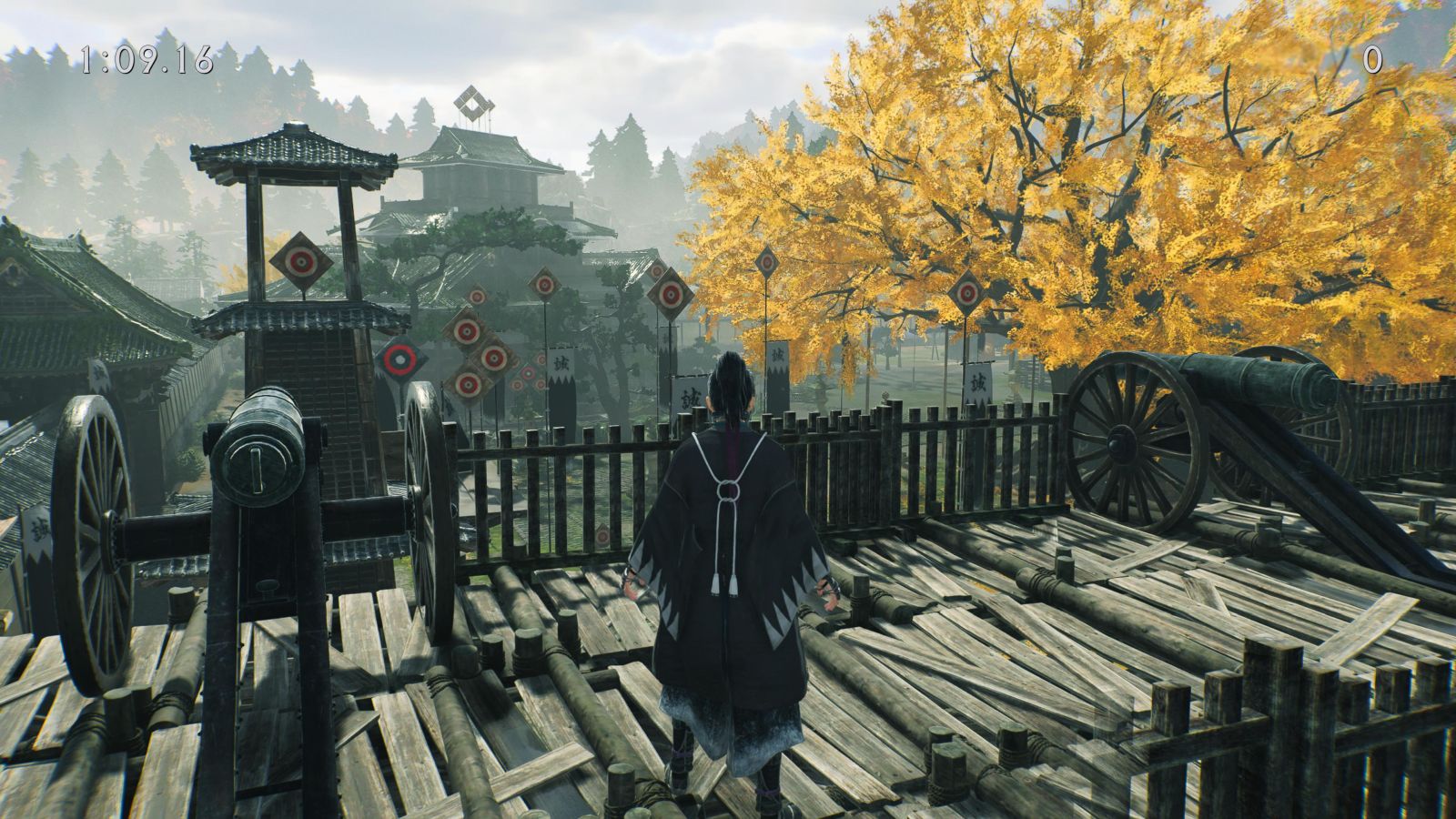
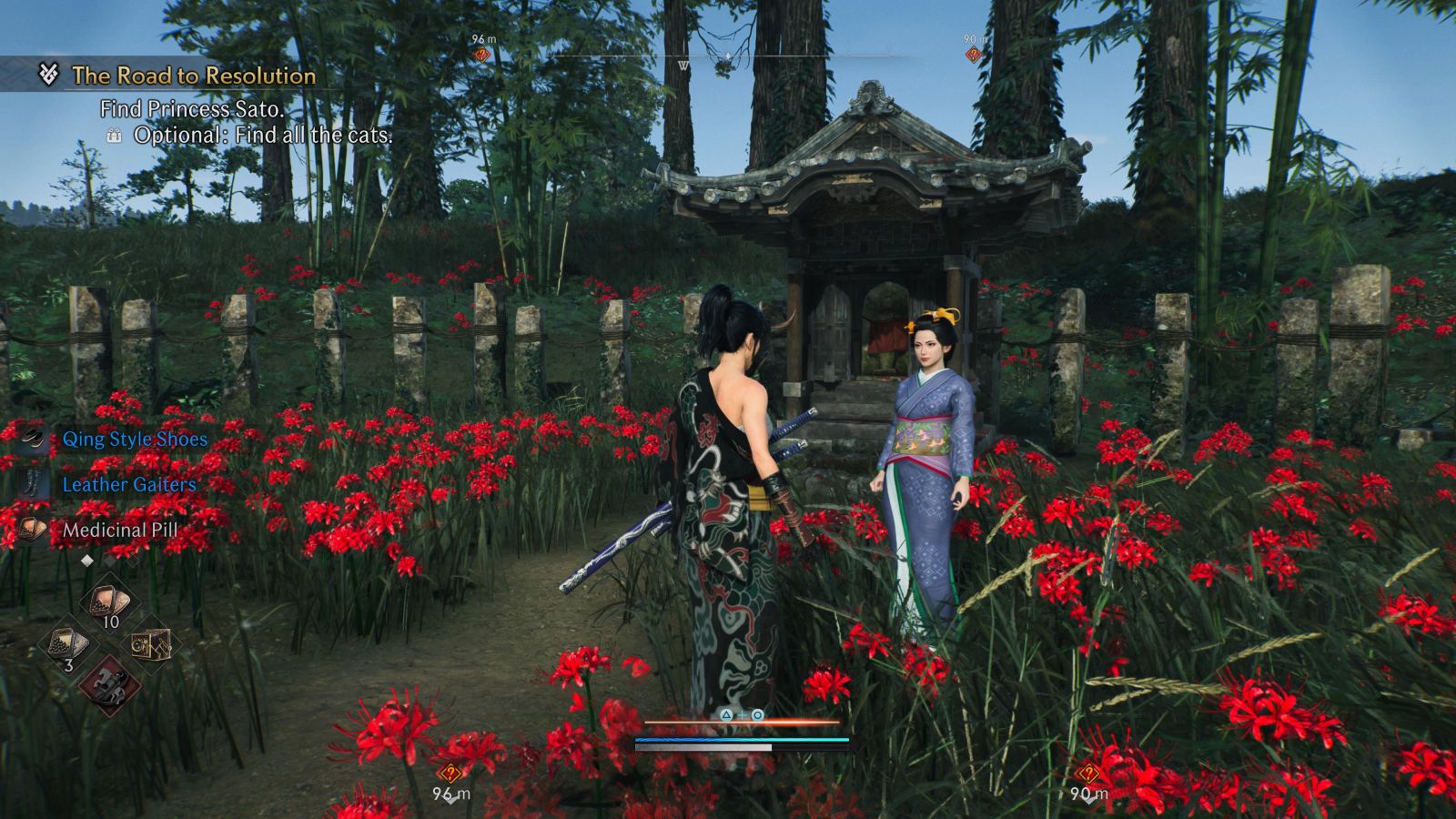
Weapons and Armor
The area which most closely resembles Team Ninja’s previous releases, specifically the Nioh series, is in the weapon and armor system. Players who enjoy tinkering with their weapon attributes or carefully curating the perfect outfit are in luck, because in Rise of the Ronin weapon and armor drops occur nearly as often as blood splatters. Enemies, treasure chests, mission rewards, and nearly every other task you complete leads to new gear, leaving you constantly inundated with new equipment. Thankfully Team Ninja was gracious enough to implement an inventory system which holds 2,000 items at a time, allowing you to avoid wasting precious game time constantly juggling your gear and determining whether to keep, store, or sell items.
In true Nioh fashion, you can alter every piece of gear to suit your preference. If you find yourself attached to a piece of gear but after a few hours of playtime begin to realize that its stats aren’t quite holding up against new enemies, then you can visit a blacksmith who will help you upgrade that piece of gear using parts earned from disassembling other weapons and armor. Likewise, if you are happy with a piece of gear’s stats, but not its appearance, then you can use transmogrification to alter its appearance to match any item of that type you have previously held. It is a much simpler system to manage than Nioh’s was, while still offering many of the same services.
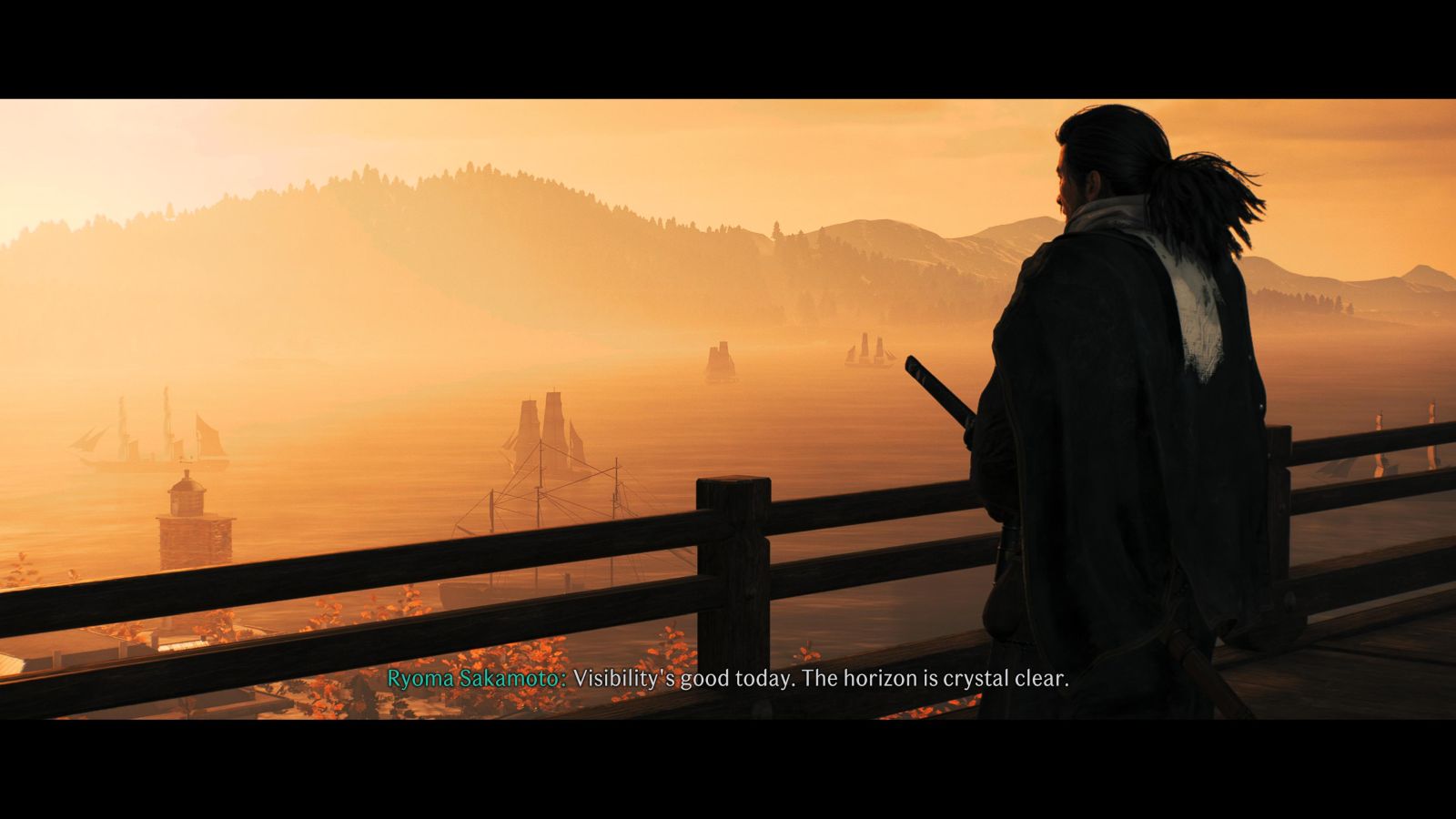
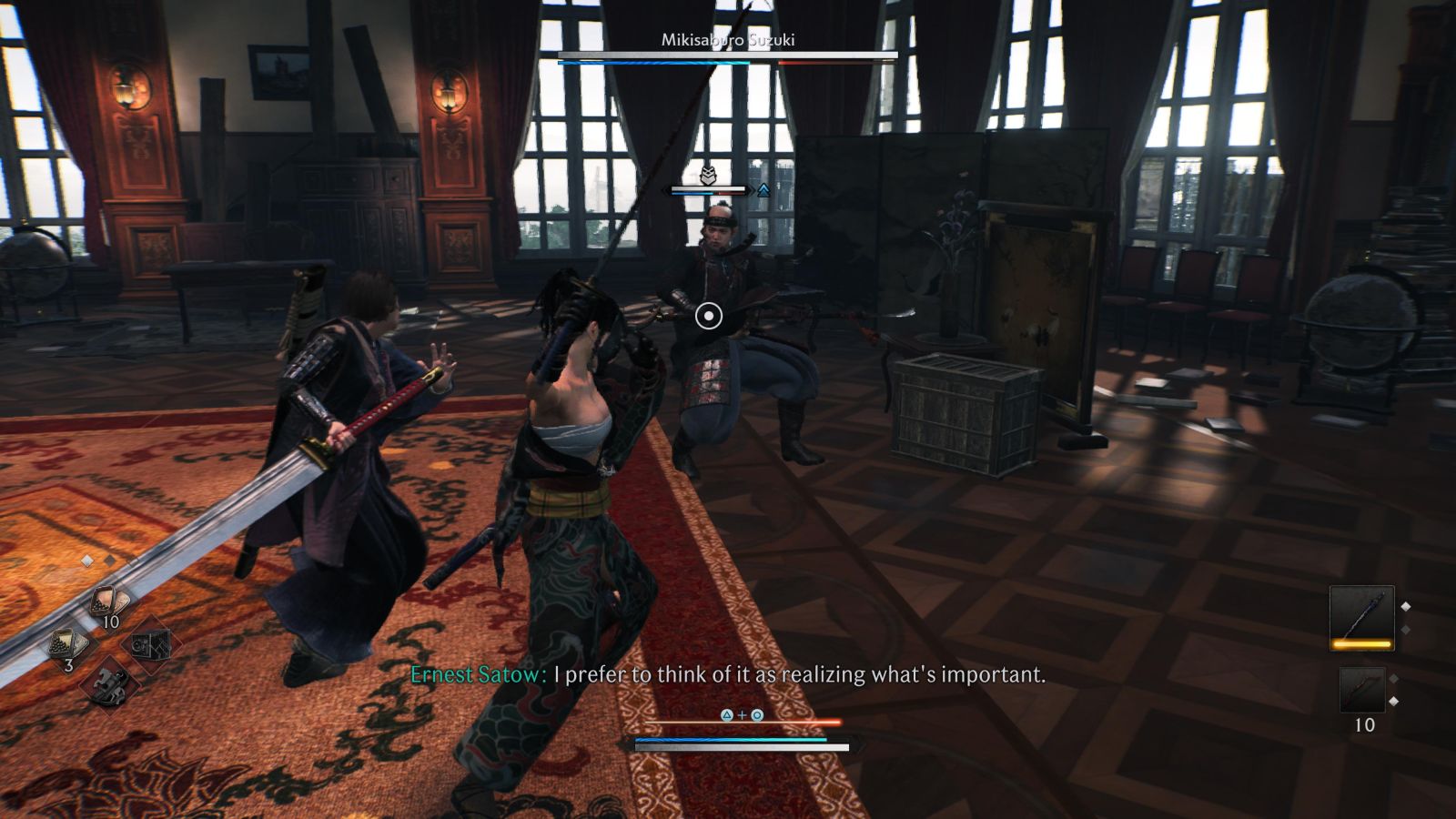
Exploring the World (Missions, Side Quests, and More)
Rise of the Ronin takes place in an open-world setting, with a few different land masses to explore, each chock full of things to do and discover when not tackling the main story missions. The initial area alone will take upwards of 15 to 20 hours to 100%, with other areas just as densely populated with quests to complete and items to discover opening up as the game progresses. Whether or not you enjoy your time in this open-world will be solely defined by your patience with common open-world tropes. Rise of the Ronin is full of people to help, cats to rescue, dogs to pet, treasure chests to plunder, towns to restore public order to, banners to light, scenery to take pictures of, armor and weapons to purchase/upgrade/redesign, items to craft, fugitives to defeat, landmarks to discover, gliding/firing/horseback challenges to master, and more. In fact, there’s so much to do at any given moment that it can often feel overwhelming. Thankfully though, none of these tasks are mandatory, though completing a few will go a long way toward ensuring you have the stats and gear to tackle some of the more difficult endgame missions.
To me, open-worlds are always a double-edged sword and Rise of the Ronin’s is no different. For the completionist, there is a seemingly never-ending stream of small tasks to accomplish, allowing players to spend more time basking in the world, but for those who quickly grow tired of basic repetitive checklists to complete but are still drawn to see everything the game has to offer, you may find yourself becoming more disheartened as the game progresses. My recommendation would be to tackle only the tasks which interest you. You may not have any interest in finding landmarks or chasing cats, but you may enjoy restoring public order to enemy territories or hunting down fugitives and learning their fighting styles. Personally, I began my playthrough by tackling every task thrown at me, but eventually learned to better balance the main story missions, side quests, bonding missions, and arbitrary tasks to create a more enjoyable experience.
I’d like to point out that all of these world tasks aren’t immediately available the second you step foot into a new area, instead Rise of the Ronin makes the player work for each tidbit of information. The open-world is divided into multiple subsections, with each subsection featuring a specific number of tasks to accomplish. Normally, you’ll begin your task collecting journey by stumbling upon a Veiled Edge Banner, which serves as Rise of the Ronin’s equivalent to the Dark Souls series bonfire. These banners offer welcome respite from the often-brutal battles you will face, allowing you to rest and replenish supplies. Each Veiled Edge banner unlocked also becomes a fast travel point, allowing quick traversal between unlocked areas of the map. Upon discovering a banner, you begin to grow a bond with that area, which then updates your map with a few points of interest. As you complete the objectives for these points of interest your bond with the area will continue to grow and so will your map, eventually revealing all available tasks.
This system proves to be a rather ingenious way of allowing the player to maintain their sense of discovery while still receiving that dopamine hit which stems from constantly seeing new points of interest pop up on your map. If at any time If you begin to feel overwhelmed, you can hover over any area on the map and press Triangle, which will then bring up an easy-to-follow checklist of all uncompleted and completed tasks in that district.
I’ve mentioned restoring public order a couple of times now and for good reason, as it is the most common way to increase your bond with an area while also opening up new opportunities, shops, and sometimes side quests, and is arguably the most fun optional task to accomplish. Public disturbances are indicated on the map by glowing red dots, which represent towns under the control of the enemy. Your task is to infiltrate these towns and defeat all enemies, thereby liberating the town and allowing its citizens to return home. Doing so often leads to helpful shops to open and access to new Veiled Edge banners to fast travel between.
Since the map is rather large, you are given a horse and a set of gliding wings early on to help with traversal until you unlock the fast travel points. That said, I rarely used the horse, as I found him to be a bit finicky to ride though there is a cool feature where you can set your horse to auto-run to any area you indicate, and then sit back and watch as the AI takes over and travels for you. Truth be told though; I used this a total of once before I ditched the horse forever and stuck to traversing the world on foot with a healthy amount of jumping off ledges and gliding. It helps that the world is rather flat, allowing for easy movement between areas with few instances of getting caught on the environment or getting slowed down. My biggest gripe with exploration in Rise of the Ronin is the sameness of it all. The world is rather drab, at least until late game, and the towns all tend to blend together, making exploration less exciting than it should otherwise be.
I want to add that you should never fear missing out on a mission or accidently progressing the story and locking yourself out of completing the map. Even if you do move on to another world map, you’ll still have the option to replay previous areas and reach 100% without affecting your current story’s progress. This is a welcome addition and helped me feel OK progressing whenever I grew tired of completing some of the busywork, and allowed me to return whenever I felt up to finishing off my remaining tasks.

Leveling Up
As you progress throughout the game you will earn Karma, which functions much likes the souls in the Dark Souls series. Defeating enemies and completing missions or tasks will cause Karma to accumulate, and once your Karma gauge is full you can then transform that Karma into skill points by resting at a Veiled Edge banner. However, if at any time you die to an enemy while carrying Karma, your Karma will be transferred to them, and you will then begin a quest for vengeance. This means that you will need to head back to the enemy and challenge them to battle once again; if you defeat them then you will regain your lost Karma, but if you are defeated you will lose all Karma gained. While this is a well tread system thanks to the overabundance of soulslikes in existence, it works well here and is granted a bit of novelty by providing skill points as you reach certain accumulations rather than allowing you to purchase skill points at any time.
Interestingly enough, Karma isn’t the only way to obtain skill points, as there are actually two versions of skill points to accumulate, which, I’ll admit, causes a bit of confusion during the early hours of a playthrough. Essentially, the skill points earned by Karma can be used to upgrade basic stats relating to strength, dexterity, charm, and intellect. Additional skill points specific to each of those categories can also be gained by becoming more efficient with weapon and speechcraft skills, or by finding educational books. For example, if you are hoping to unlock all available strength skills, you will not only need skill points obtained via Karma, but you will also need strength points accumulated through hard won fights. These more specific points are few and far between, offering both an incentive to complete all tasks and missions you stumble upon, and a barrier to easily unlocking all skills and becoming too powerful early on. I found the system to be an interesting take on the usual soulslike leveling up process, and – once I understood it – learned how to better plan my upgrades to compliment my playstyle. There are nearly 100 upgrades available to spend your skill points on, so the only way you’ll unlock all of them is if you participate in nearly every mission, side quest, and task available.
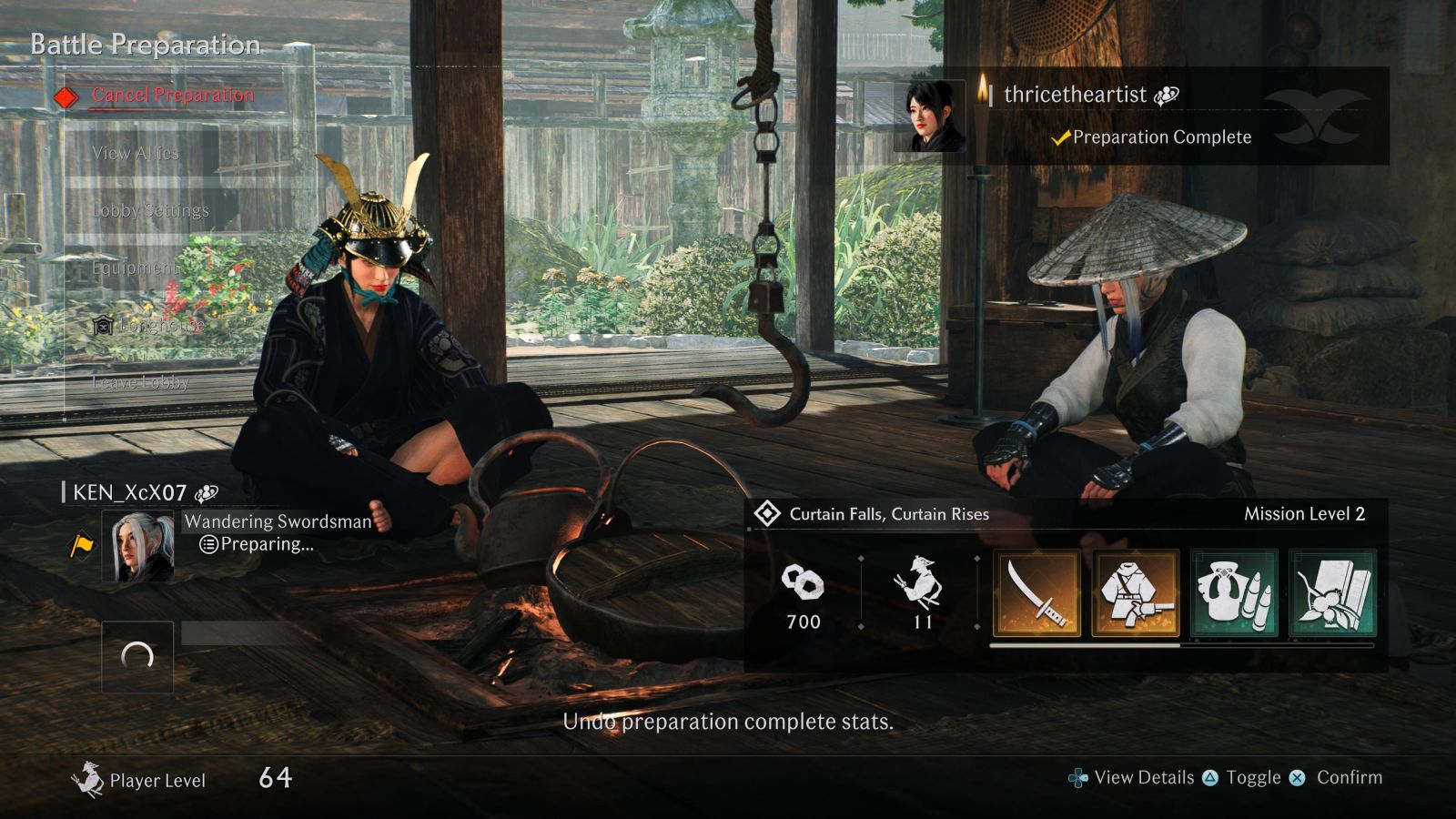
Co-Op and Online Features
Co-op, or fighting alongside others, is not mandatory during most points of Rise of the Ronin, though it is obvious that the game was designed to be played co-op during many missions, specifically due to its bonding system and the benefits you receive from choosing particular allies to fight alongside you.
There are two forms of co-op: online with other players or with AI controller allies. When you begin a mission, you are given a setup menu which allows you to choose which allies you’d like to join you, with each ally boasting their own specific strengths and skill bonuses. If you’d rather tackle the mission with other players, then you can choose one or both ally spots to open and then your menu becomes a lobby with you as the host. You can sit in the lobby and wait for players to join, or you can begin the mission with AI companions and as players join, they will take the place of the AI characters. Each mission has several Veiled Edge banners, and at each banner you can choose to switch companions, swap an AI character for an online player, or even warp all players to your location. It is an intuitive and easy to use system, which thankfully does not require any special items to initiate. And yes, for those who would rather solo the game, you do have the option to simply remove all companions and go it alone.
If you choose to tackle these missions with only AI companions, then the game allows you to instantly swap between characters by simply holding in L1 and pressing either up or down. I absolutely loved this system, as not only does swapping characters mid-fight allow for some epic boss battles, but also provides you with insight into playstyles you may not have thought to attempt. Some characters are adept with katanas, some with spears, some base their fighting style around handguns – it is quite impressive how unique each character is. I highly suggest switching out the allies you use during missions often and taking each for a test drive – you never know when you’ll find your new preferred fighting style. While using AI companions, if one character falls, then control instantly swaps to another character and you can use a health item to revive the fallen character. Likewise, if you are playing online co-op and you fall then you must wait for an online player to revive you. If you choose to tackle a mission on your own and you fall – well, game over.
Aside from missions, you can begin co-op via your longhouse in each world map. While sitting in the longhouse you simply choose the cooperate option and whether you want to join or recruit. If you decide to recruit then you must establish the parameters of play, which includes deciding which mission you may want to tackle, what difficulty level to play in, and more. Alternatively, if you’d rather join someone else’s game you have the option to join a random game or to set a password to ensure you only play with your friends. Again, unlike the Nioh series, you do not have to use any items to begin co-op. Instead, it is as simple as fast traveling to the longhouse and hitting a few buttons. It is obvious from the ease of use that Team Ninja wants Rise of the Ronin to become a go-to for those itching for some cooperative adventuring.
I do want to state that since I was playing Rise of the Ronin quite a while before release, I had very little chance to test out the online play capabilities aside from a few brief missions with a fellow editor. I tried often to join or recruit random players, but had no success, which is understandable due to the small pool of players all rushing to complete the game before release. I don’t believe this is a knock on Rise of the Ronin in any way and I have no reason to believe that there are any issues with the online system, I just can’t provide much feedback on how it all works. Such is the issue with playing any game pre-release.
Online is implemented in a few other subtle, but nifty ways, such as other players’ characters showing up in your world – though they are controlled by AI. Sometimes you’ll see a fellow player simply passing by on a leisurely stroll through the world, or you may find them as a prisoner in an enemy camp, or in the late game you may face off against them as a leader of a Ronin camp. When you pass them in the open world you can view their name, title, and current gear, and – if you’re feeling frisky – can attack them for valuable proficiency and skill points. Alternatively, if you find a character captured in an enemy base then you can rescue them, after which they will fight alongside you to liberate the camp. While these are simply AI controlled versions of other players’ characters, it is a nice touch, and one that helps provide the world with some much needed substance. If you look closely, you may also stumble upon other players’ dogs out exploring the world, if you do, be sure to pet them and you may walk away with a reward!

End Game
In true Team Ninja fashion, Rise of the Ronin has a robust endgame which is sure to keep those itching for an extreme challenge entertained for weeks. After completing the main story a new difficulty level, Midnight, opens, and you gain the ability to replay previous missions to obtain a new tier of gear called Masterwork which boasts incredible stats for both armor and weapons. Additionally, a new set of challenges called Ally Missions unlocks, and a new skill set called Breakthrough. Ally Missions are considered high-risk, high-reward and offer a brutal challenge, while the Breakthrough skill set provides you with a slew of additional skills to pour your skill points into, including a new style of fighting, higher health and defense, better ally protection, and more. Those who have played Nioh may recognize this semi-New Game+ structure, as you can swap between the Midnight missions and your previous missions without having to reload saves or begin a New Game+ from scratch, allowing you to play both simultaneously. It was a great system in Nioh, and works just as well in Rise of the Ronin.
Final Thoughts
I’ve spent a lot of time discussing the plethora of things you can do in Rise of the Ronin, but not nearly as much time explaining my own opinion of the game. To be honest, for much of my playthrough I wasn’t quite sure what I thought, but eventually Rise of the Ronin won me over and I found myself becoming engrossed in this adventure, savoring every interaction with the characters I encountered, and dead set on completing each area 100%. Rise of the Ronin is not as polished as you’d expect from a PS5 exclusive, the graphics are outdated, the AI isn’t exactly bright, there is a ton of pop in and instances of low resolution textures, the voice acting – at least in English – is a bit off putting, and there’s a slight jankiness to much of it, but despite all its flaws Rise of the Ronin grows on you. After all, a game is defined by its fun factor and what it can offer the player, not just graphics, and to that extent Rise of the Ronin is a winner.
I’m not sure if my hours invested led to me better overlooking the flaws, if a patch went out that improved a few of these problem areas, or if the later areas are just better designed, but much of my complaints during the first ten or so hours of my playthrough melted away by my 30th. That said, I do think that this game will appeal more to the casual player than to those who go in expecting the next Nioh. Rise of the Ronin is its own thing, and once you let go of your preconceived notions of what a Team Ninja game should deliver, you’ll find yourself immersed in a game which will provide you with well over 50 hours of content in a first playthrough, while also offering a thought provoking story, consequences that actually matter, a unique bond system, and fast and fluid – if a bit repetitive – combat. Rise of the Ronin may not be the next Nioh, but it is exactly what it needs to be – itself. Do yourself a favor and give it a chance.
Richard Allen is a freelance writer and contributing editor for various publications. When not writing for Gaming Trend you can find him covering theatre for Broadway World, movies and TV for Fandomize, or working on original stories. An avid retro gamer, he is overly obsessed with Dragon's Lair. Chat with him via @thricetheartist on Twitter and @richardallenwrites on Facebook and Instagram.

Rise of the Ronin is nothing if not ambitious, and though that ambition leads to the game not being as polished as you may expect from a PS5 release, it still manages to tell an enthralling story in which your actions truly matter, while also utilizing a unique bond mechanic, an in-depth -albeit slightly repetitive - combat system, and so much to do you’ll find yourself losing sleep in an effort to complete just one more task. Those approaching Rise of the Ronin like the next Nioh will likely leave disappointed, but those who approach Team Ninja’s latest effort with an open mind and patience will find a gem that just happens to have a few rough edges.
PROS
- Intricate story with branching story lines where your choices matter
- Unique bond system
- Robust Endgame
- Fast and complex combat…
CONS
- …which unfortunately becomes a bit repetitive
- Lots of pop in and texture issues
- Lacks polish
Unless otherwise stated, the product in this article was provided for review purposes.
See below for our list of partners and affiliates:

 1 month ago
56
1 month ago
56

